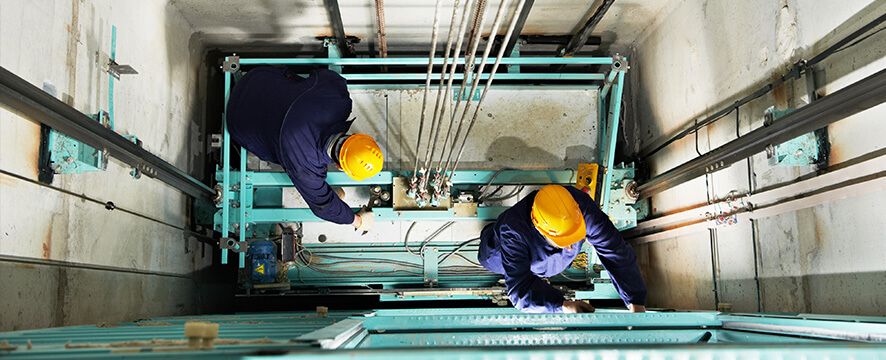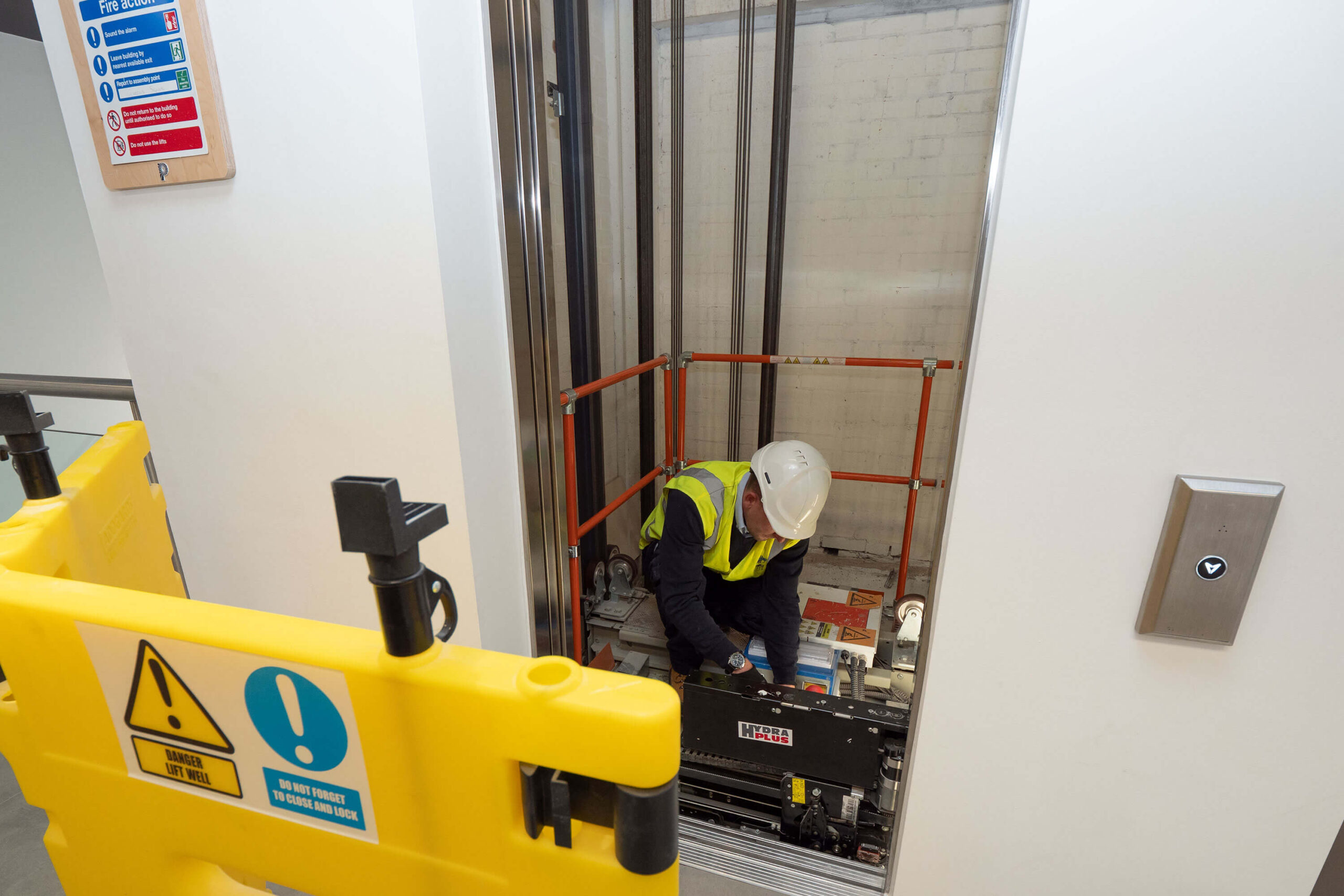Platform Lift Capacities Explained: Why They Matter for Lift Servicing
Platform Lift Capacities Explained: Why They Matter for Lift Servicing
Blog Article
An Extensive Method to Enhancing Performance With Strategic Lift Repair Work Approaches
In the realm of facility administration, the effectiveness and reliability of lifts play a crucial function in making sure smooth operations. A organized and critical technique to raise repair service and upkeep is important to maximize efficiency and minimize downtime. By addressing usual lift problems, applying aggressive maintenance steps, and developing targeted fixing strategies, facilities can optimize their lift systems to run at peak efficiency levels. The secret to achieving continual enhancement lies in making use of data-driven insights to notify decision-making processes and drive constant enhancement - platform lift dimensions. This thorough approach to improving lift efficiency via strategic repair work methods holds the guarantee of not only improving operational effectiveness but likewise prolonging the lifespan of lift systems.
Significance of Lift Efficiency Optimization
Understanding the relevance of maximizing lift performance is important for guaranteeing reliable and dependable vertical transport systems in different buildings and structures. Lifts are necessary elements of modern-day facilities, providing vertical mobility for residents and goods within structures of differing elevations. By maximizing lift performance, structure owners and center managers can enhance user experience, enhance power effectiveness, and boost general operational effectiveness.
Efficient lift performance optimization entails numerous elements, consisting of rate, capability, energy upkeep, safety, and intake demands. Properly enhanced lifts can minimize wait times for customers, especially in high-traffic structures, bring about boosted fulfillment and efficiency. Additionally, enhanced lifts add to energy savings by making use of advanced control systems and innovations that lessen power intake without endangering efficiency.

Identifying Common Lift Issues
Determining typical lift issues is essential for preserving the operational performance and safety and security of vertical transportation systems in buildings. Recognizing these problems can help protect against malfunctions, decrease downtime, and prolong the life expectancy of the lift equipment. One typical problem that building supervisors and upkeep groups typically encounter is irregular or jerky motions during procedure. This issue can be a measure of problems with the lift's motor, control system, and even the alignment of the lift cars and truck.
An additional common lift problem is odd noises emanating from the lift shaft or equipment space. These sounds can vary from grinding or scuffing audios to loud clunking sounds, all of which might signify underlying mechanical issues that require immediate focus. In addition, regular door breakdowns, such as doors closed or closing appropriately, can interfere with the smooth flow of passengers and pose safety and security threats.
Carrying Out Aggressive Maintenance Measures
To enhance the efficiency and long life of lift systems, positive maintenance procedures play a vital role in making sure functional reliability and safety and security. platform lift dimensions. Implementing aggressive upkeep entails methodically checking, servicing, and fixing components before they fall short, therefore preventing expensive downtime and potential safety risks. Regularly set up inspections can help recognize small problems prior to they escalate into significant issues, ultimately prolonging the life expectancy of lift systems
One key facet of proactive maintenance is developing a detailed maintenance routine based upon manufacturer suggestions and industry ideal practices. This timetable must describe tasks such as lubrication, positioning checks, and element replacements at specified periods. Additionally, implementing condition monitoring strategies, such as vibration analysis and thermal imaging, can help identify early signs of wear or malfunction.
In addition, training maintenance staff on correct evaluation techniques and preventive upkeep treatments is vital for the effective implementation of aggressive maintenance procedures. By fostering a culture of aggressive maintenance within an organization, lift systems can run at peak efficiency degrees, reducing disruptions and making sure the safety and security of users.
Developing Targeted Fixing Plans
Upon analyzing the upkeep documents and performance information, the engineering group can develop targeted repair work strategies to optimize and attend to specific concerns lift system performance. These repair plans are tailored to the determined troubles, making certain that resources are focused on dealing with vital problems successfully. By prioritizing repair services based upon their effect on performance and safety, the targeted fixing plans aid minimize downtime and upkeep prices while making best use of the lift system's integrity.
Creating these plans entails a comprehensive evaluation of the lift system elements, consisting of electric motors, cable televisions, brakes, and control systems. Through this comprehensive assessment, the engineering team can determine the source of any type of malfunctions or degradation in performance. This info is then made use of to create a roadmap for the repair service procedure, describing the necessary actions, timeline, and sources required to deal with each concern properly.
In addition, targeted repair plans might consist of preventative procedures to enhance the lift system's longevity and performance. By proactively resolving prospective problems before they escalate, these plans contribute to the general performance and safety of the lift system.
Using Data-Driven Insights
Taking advantage of the power of data-driven understandings is critical in maximizing lift system efficiency and maintenance performance. By leveraging information analytics, lift drivers can make informed decisions that cause enhanced operational efficiency and price savings. Via the evaluation of historic performance patterns, information and trends can be determined, making it possible for predictive maintenance methods to be implemented. These anticipating upkeep approaches assist avoid go to my site unforeseen break downs, reduce downtime, and visit this page prolong the life expectancy of lift systems.

Conclusion
To conclude, optimizing lift efficiency is essential for ensuring effectiveness and safety and security in structures. By identifying common lift problems, applying proactive upkeep procedures, creating targeted repair strategies, and using data-driven understandings, companies can enhance efficiency and reduce downtime. It is essential to take a thorough technique to raise repair work methods to optimize functional effectiveness and make certain the durability of lift systems.
By dealing with common lift issues, executing aggressive upkeep actions, and creating targeted fixing strategies, centers can maximize their lift systems to operate at peak efficiency levels.An additional widespread lift issue is unusual noises originating from the lift shaft or machinery room.Upon analyzing the upkeep records and efficiency data, look these up the engineering team can create targeted fixing strategies to resolve specific concerns and enhance lift system capability. By focusing on repair services based on their impact on efficiency and security, the targeted fixing plans assist reduce downtime and maintenance expenses while making the most of the lift system's reliability.
It is crucial to take an extensive strategy to lift repair service methods to make best use of operational efficiency and guarantee the durability of lift systems.
Report this page